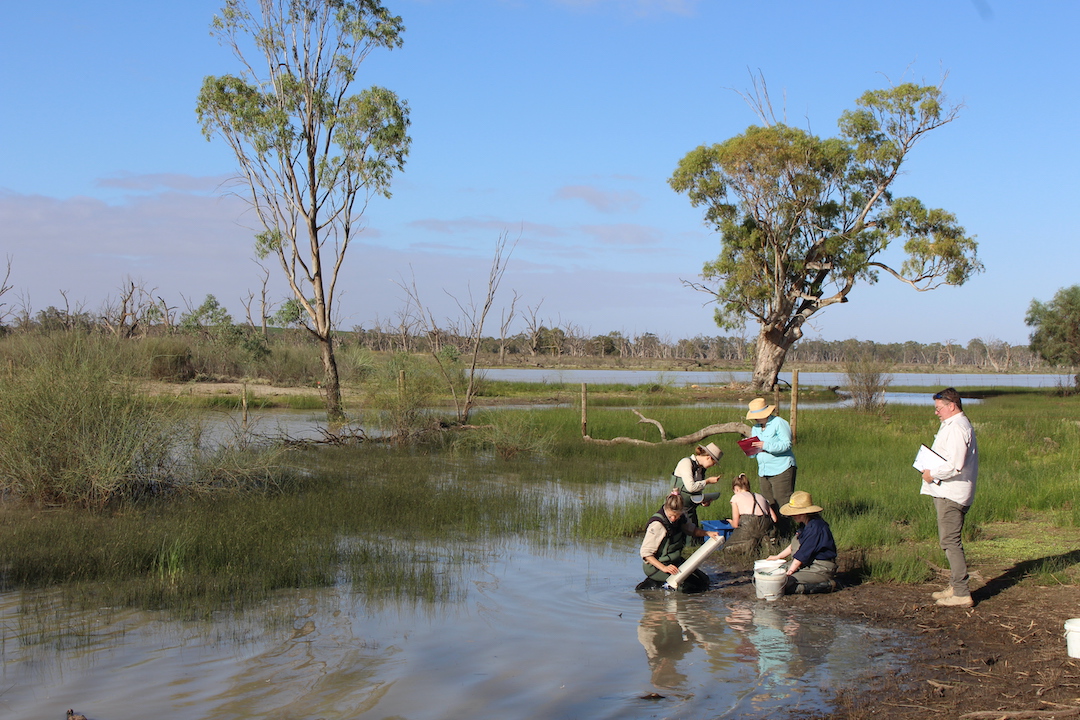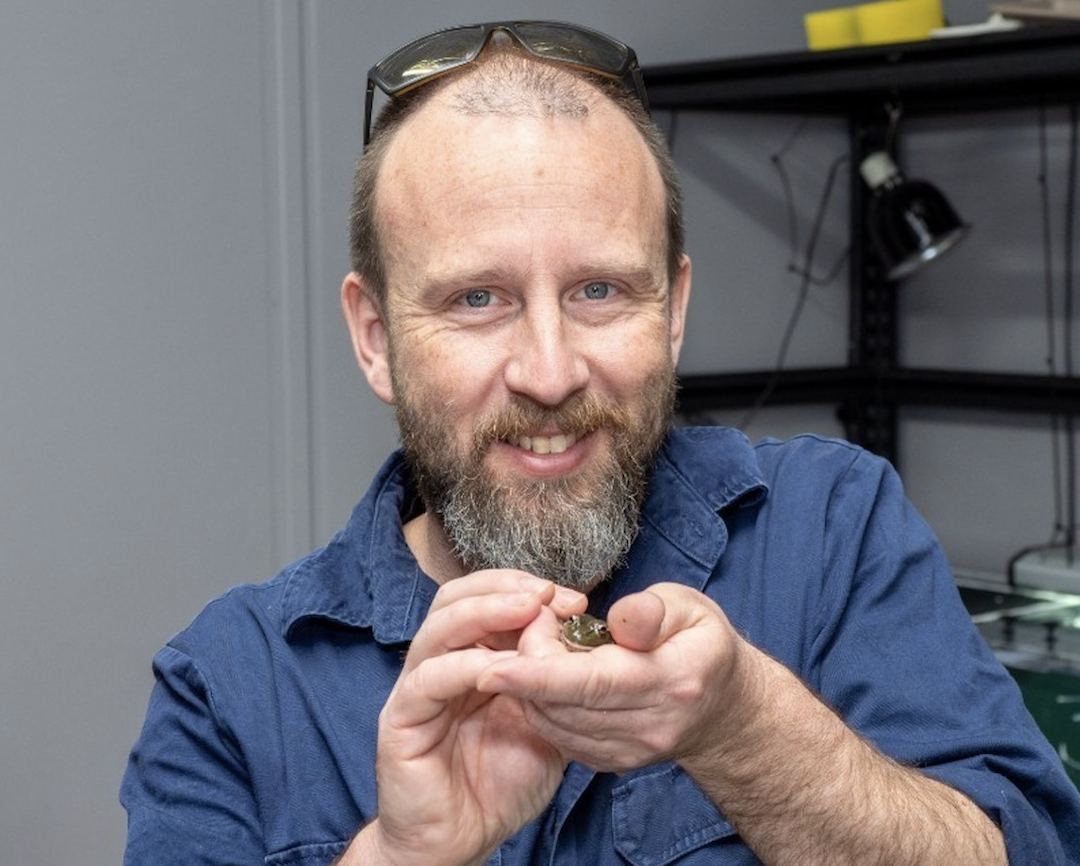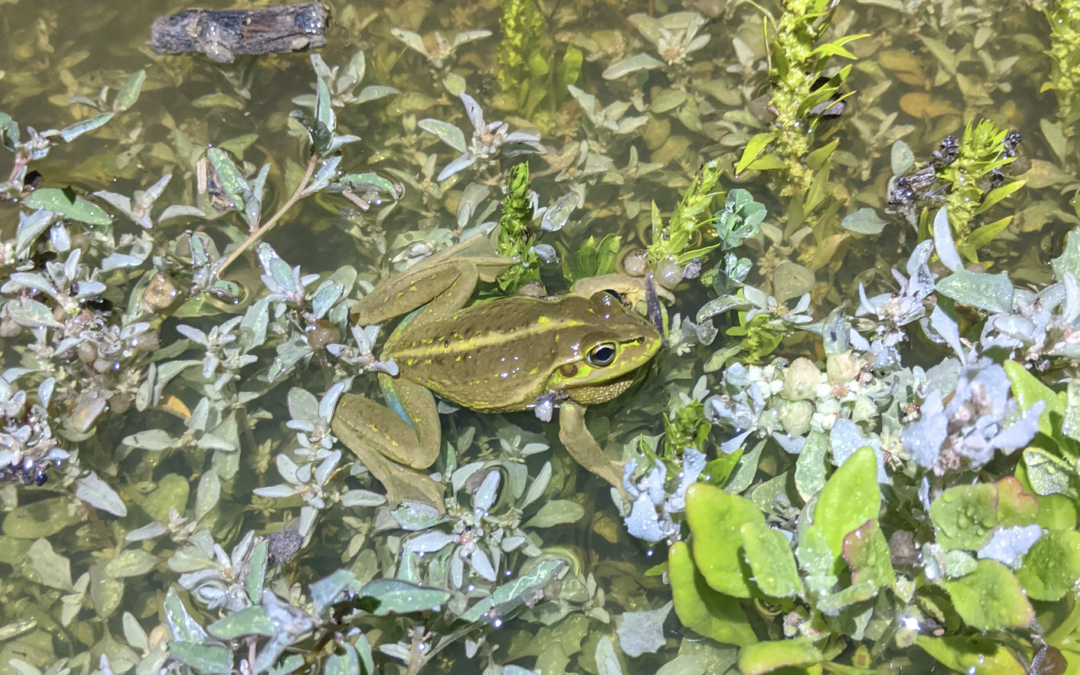A new method of frog collection could help conservationists to save endangered amphibian species.
While frogs may not seem like a scarce species, they belong to a class of animals known as amphibians, the most endangered group of species on the planet. Currently, two out of every five species of amphibian are classified as threatened with extinction, and this number continues to grow.
Faced with this harsh reality, a group of scientists led by Flinders University are attempting to protect Australian frogs by introducing a new method for collecting wild frogs to breed in facilities or relocate to a safer area.

An Australian southern bell frog
The need for new ideas
The pivotal study was published in Austral Ecology, and conducted by using virtual frog populations to simulate different conservation approaches in order to determine the most effective method.
Rupert Mathwin, Flinders University PhD Candidate, explains the challenges of trying to collate data without harming amphibian populations.
“Frogs are in trouble all over the world and we need to act now. Developing safer ways for scientists and conservationists to do their important work is a critical step towards saving these species,” he says.
“Many conservation programs collect animals from the wild for these purposes but the number of animals that can be safely collected has been mostly guesswork.
“Until now, conservationists had no clear guidelines for safe collection, which made collecting new animals potentially a dangerous operation.”

Volunteers and government ecologists from the Murraylands and Riverland Landscapes Board completing a tadpole survey at Overland Corner wetland in South Australia. Several of these southern bell frog tadpoles were transferred to the hatchery run by the ‘Help the Southern Bell Frog Bounce Back’ program.
Leaps and bounds
The project was conducted focusing on Australia’s southern bell frogs (Litoria raniformis), classified as one of Australia’s Top 100 priority threatened species.
These frogs are a green-brown colour, and can grow up to 10 cm in body length. They are commonly found living in vegetation on the edge of water sources such as lakes, dams, ponds, swamps, streams and more.
However, southern bell frog populations have been declining due to climate change, loss of wetlands, predation from introduced fish and foxes, as well as diseases such as chytrid fungus.
In order to determine the best methods of conservation, the team established three frog population simulators, each targeting a specific population of southern bell frog; New South Wales, Victoria and South Australia. This enabled the scientists to collect virtual eggs, tadpoles and adult frogs to learn how each population would respond to the collection.
“Each population had its quirks, but it was clear that collecting tadpoles or frog eggs, rather than adults, had the lowest impact on wild populations. Interestingly, it wasn’t the size of the population that determined how many animals could be collected, it was how often the population received water,” says Mr. Mathwin.

First author and PhD candidate from Flinders University, Rupert Mathwin.
Why conservation is critical
Aside from supporting the growth of frog populations, the team hopes to raise awareness around the dangers of removing these amphibians from the wild.
“Taking southern bell frogs from the wild is illegal without a permit but anyone can get involved by supporting programs such as Help the Southern Bell Frog Bounce Back and Taskforce Growler to do this important work,” explains Mr. Mathwin.
“Finding better ways to support these fascinating creatures in the modern world requires a range of conservation strategies and our approach is an important step in this global journey.”
Frogs can also act as an early warning sign for environmental degradation, making it even more vital to support conservation efforts.
“Frogs are like the canary in the coalmine, and when they start to disappear, it’s a sure sign that these systems are in trouble” says Mathew Flinders, Professor of Global Ecology at Corey Bradshaw.
“Using mathematics in conservation makes decision-making more efficient and effective, with applications to everything from saving threatened species to the removal of harmful invasive organisms.
“For too long, realistic models for conserving many threatened frogs have not been available. We’re changing that.”
To learn about another Australian frog monitoring program, FrogID, click here.

